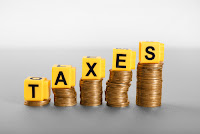Last month, new research brought to light concerning data regarding young people and liver disease; notably, since 1999, deaths from cirrhosis of the liver rose by 65 percent in the United States. Raising awareness about the inherent dangers associated with alcohol use must be a top priority in America. The number of people under the age of 35 developing deadly health conditions is rising; and, as the liver specialist, Dr. Haripriya Maddur points out: 10 years of heavy drinking can lead to cirrhosis.
In the past, we have highlighted how the ubiquity of alcohol in the U.S. is a contributing factor to 88,000 alcohol-related deaths each year. People can acquire alcohol with relative ease, any day of the week; beer, wine, and liquor – for the most part – is inexpensive. Just $20 spent each night can do a whole lot of damage to the mind, body, and spirit. With some 17 million Americans meeting the criteria for an alcohol use disorder, taking severe measures to curb excessive alcohol use amongst the general population is long overdue.
In the United States, experts and lawmakers implement several strategies to curb heavy consumption; such efforts include advertising restrictions, blood alcohol concentration (BAC) laws, restricting alcohol sales hours, primary care physician problematic drinking screens, and taxes. It’s important to know which alcohol prevention policies are most effective, and which do not pay off, to better inform policymaking.
Higher Alcohol Taxes in America
Researchers from the World Health Organization (WHO) and colleagues set out to determine which of the five alcohol control strategies from above are cost-effective public health policy in the mission to prevent alcohol-related injury and death, Science Daily reports. The findings – appearing in the Journal of Studies on Alcohol and Drugs – shows that hiking alcohol taxes is an extremely cost-effective means of preventing excessive drinking.
“Tax increases may not sound the most attractive of policy options but are the single most cost-effective way of diminishing demand and reining back consumption,” says lead researcher Dan Chisholm, Ph.D., of the Department of Mental Health and Substance Abuse at the WHO.
The researchers found that:
- A 50 percent hike in alcohol excise taxes would cost less than $100 for each healthy year of life gained in the overall population, and add 500 healthy years of life for every 1 million people.
- Hours of operation and advertising restrictions would also cost less than $100 per healthy year of life gained, and add up to 350 healthy life years for every 1 million people.
- Ramping up blood alcohol concentration laws was less cost-effective, costing up to $3,000 per healthy year of life saved, adding no more than 100 years of healthy life per 1 million.
- Screenings primary care doctors costs up to $1,434 per year of healthy life gained, but it would result in up to 1,000 years of healthy life per 1 million people.
The authors highlight the fact that attempts at raising excise taxes are met with staunch resistance from the alcohol industry, according to the article. Nevertheless, they are hopeful that this new data will lead to changes in policy.
“Implementation of these effective public health strategies is actively fought by the alcohol industry, often with threats of lost jobs and/or revenue for countries,” the authors write. But, the authors add that they’d like to see their study “guide decision makers toward a more rational and targeted use of available resources . . . for addressing the substantial and still growing burden of disease attributable to alcohol use.”
Alcohol Use Disorder Treatment
Please contact Hope By The Sea if you are struggling with alcohol use disorder. We offer many innovative programs tailored to the specific needs of each client. The miracle of recovery can be yours too.


